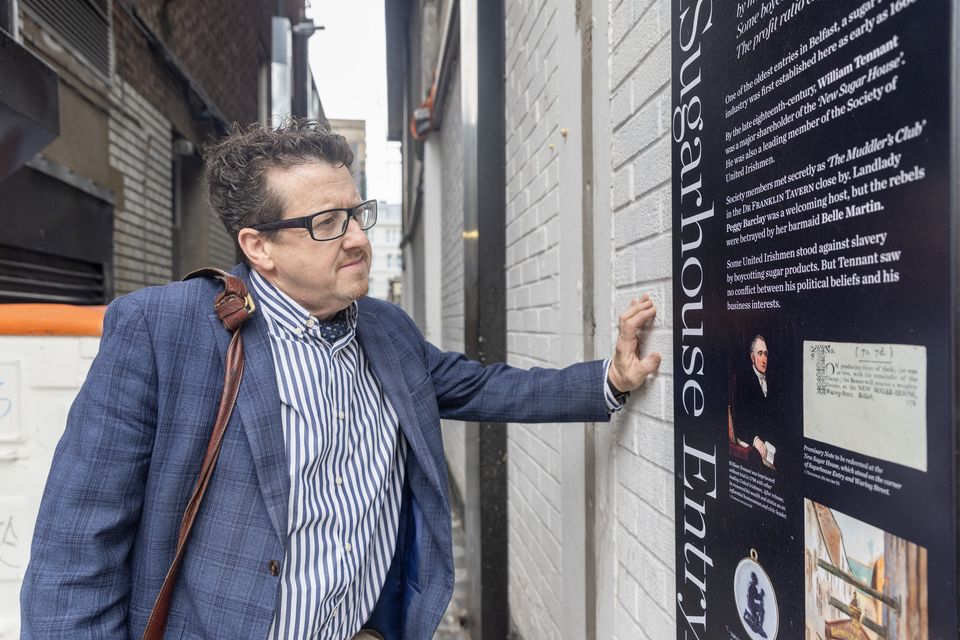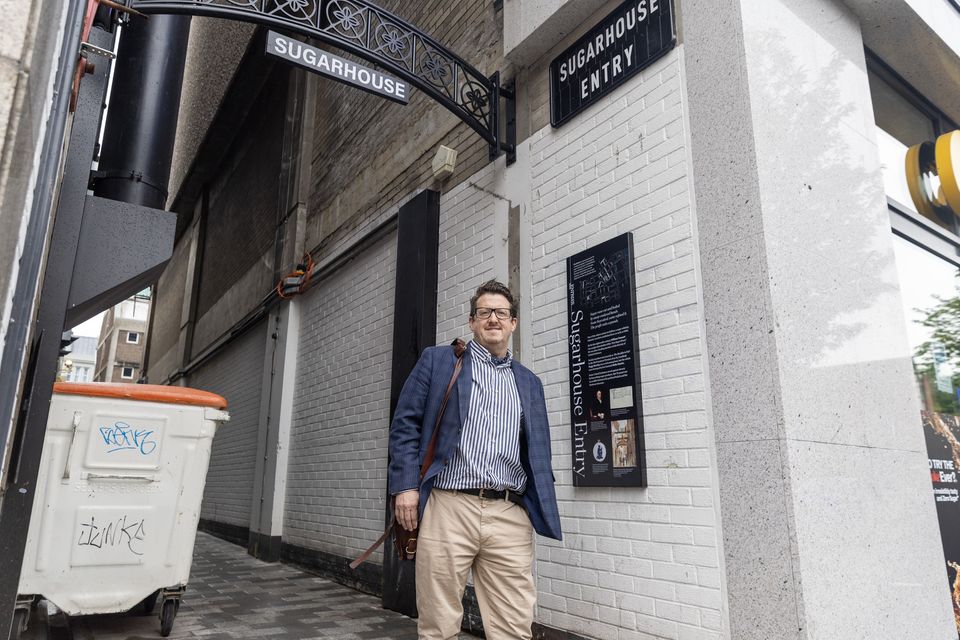A famous Belfast entry that once housed a bar where the United Irishmen met to plot rebellion has been opened to the public for the first time in over 50 years.
Sugarhouse Entry, which runs between High Street and Waring Street on the edge of the Cathedral Quarter, was closed by the Army in 1972.
Situated next to a number of government buildings at the time, access was seen as a security risk, with fears the IRA could use it as an escape route during bomb attacks.
Despite the regeneration of other historic alleyways in the area, Sugarhouse Entry remained closed until this week.
It took its name from a nearby sugar refinery at a time when Belfast was Ireland’s largest port.
Seán Napier at Sugarhouse Entry. Picture: Aodhan Roberts/Belfast Telegraph
It is also known for links to the Society of United Irishmen, a group led by Theobald Wolfe Tone that was inspired by the French Revolution and wanted to overthrow British rule.
The entry was extensively damaged by Luftwaffe bombers during the Belfast Blitz in 1941.
Local historian Sean Napier, who is involved with the 1798 Belfast and Dublin Walking Tours, said — of all the city’s alleyways — Sugarhouse Entry is the most historically important.
In the 1790s it was home to Peggy Barclay’s Tavern.
Sean explained: “Peggy’s Tavern was a famous place where the United Irishmen all used to meet.
“Most of the bars and public houses were down alleyways or back streets, as they were seen as places of ill repute — so that’s why they were hidden down alleyways.
“When the United Irishmen were founded in 1791, they met in various places, but all the action would have happened in Sugarhouse Entry.”
A small painting on a wall in the entry carries a quote by Thomas Russell: “Every time I look at a lump of sugar I see a drop of African blood.”
The sugar business was heavily linked to the slave trade at the time.
Russell was executed for high treason in 1803.
Sean said: “Sugarhouse refers back to when Belfast was the industrial hub of Ireland.
“It was all happening here in a city of about 18,000-19,000 people.
“Refining sugar made a lot of people very wealthy, but it was built on the backs of slaves.
“Thomas Russell was an advocate for the abolition of slavery, as most of the Belfast Presbyterians were at that time.”
Seán Napier in Sugarhouse Entry (Aodhan Roberts/Belfast Telegraph)
Belfast City Council revealed last October it would be reopening the alley as part of its Belfast Entries Project.
The necessary work was completed this week, with the gates opened for the first time since 1972.
There are now plans for a hotel backing on to the alleyway.
The historian added: “Back in the early Seventies at the height of the conflict, there was a ring of steel set around the city.
“It is a positive move for Belfast to see the entry open and this historic area returned to the people of this city.”

